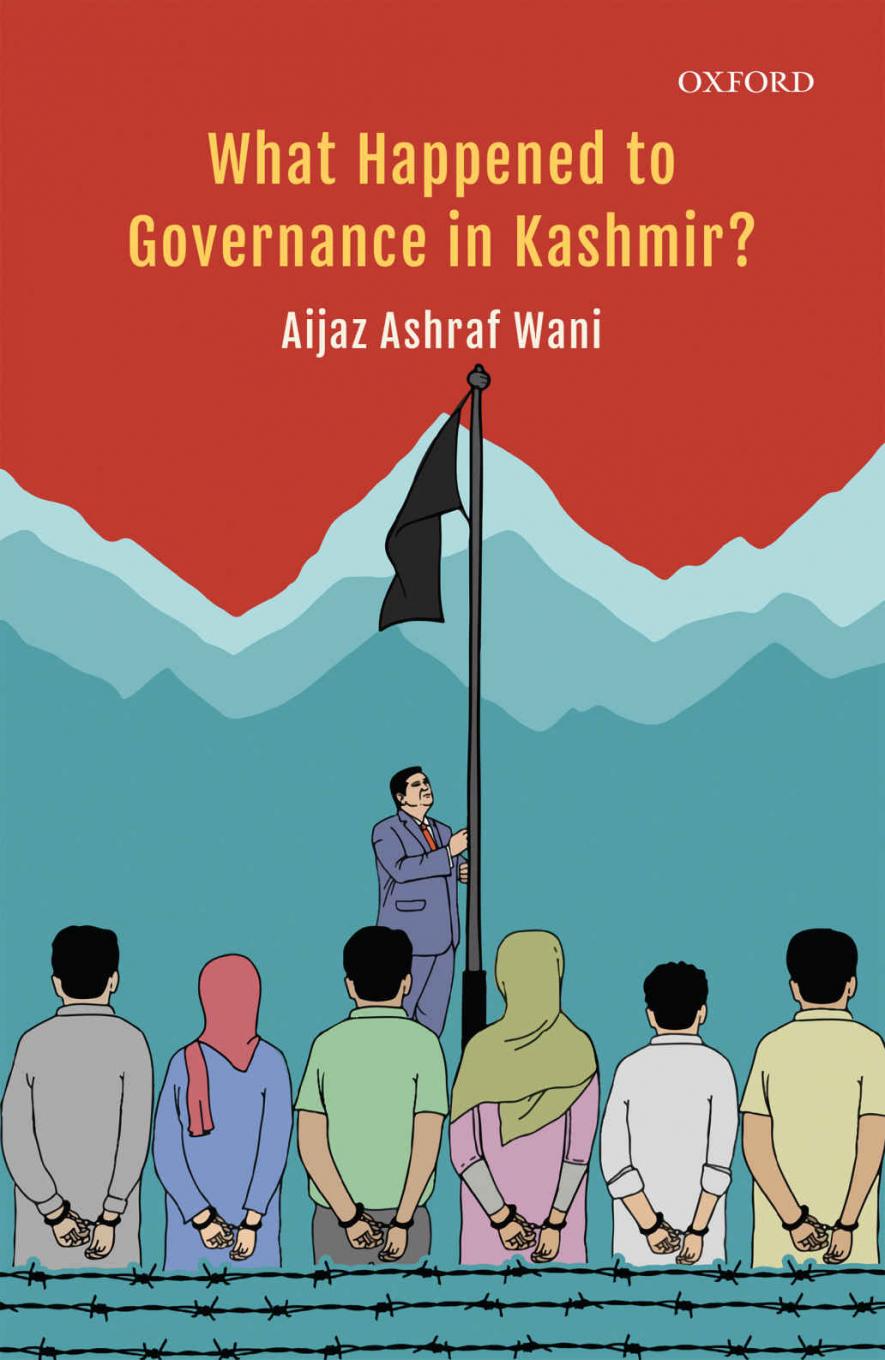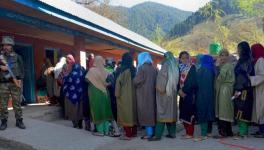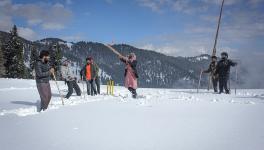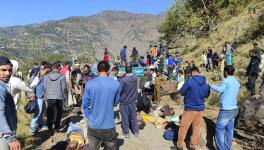Is Development Really an Answer to Conflict in J&K

What Happened to Governance in Kashmir
Aijaz Ashraf Wani
Oxford University Press, 2019
400 pages.
What happened to Governance in Kashmir by Aijaz Ashraf Wani is a timely contribution to the discourse around development in the former state of Jammu and Kashmir (J&K) and a gripping read. The book is a treasure-trove of research on policy and planning decisions taken by each dispensation that has ruled J&K since 1947, the year the state acceded to India [on the promise of a future plebiscite] to 1989-90, when an armed insurgency broke out in the state.
Wani elaborately discusses the policies, strategies and tactics adopted by the Indian state and the ‘client’ governments in Srinagar to manage the conflict-ridden state. Each time the head of a client government adopted a dissident or non-conformist posture, their dismissal followed and a new leader, more palatable to the demands of the centre, was placed as the prime minister or chief minister.
Sheikh Abdullah was replaced as prime minister by Bakshi Ghulam Mohammad and he in turn was replaced by GM Sadiq, under whose tenure the post was changed to a chief minister. Each of these leaders differed in their political approach, administrative and economic policies. Wani explains how the personal proclivities and positions of each successive head of state overhauled political and economic policy in the state. Accounting for the complex history of the disputed region and the routine interference by a powerful centre in its internal affairs, he tracks the zigzags in economic planning and policy and how they significantly affected the lives and aspirations of people.
Wani contextualises the “development discourse” employed by the Indian government often to justify its arbitrary actions and interference with the governance of the state. He traces the roots of this narrative to the time of decolonisation, when “state-led developmentalism” found favour among international donor agencies and the United States, which were apprehensive of Communist influence on poor countries.
The politics that informs India’s development policy towards Kashmir is similar, Wani argues. His argumentation punctures the political rhetoric of the Indian leadership, which contends that development will bring normalcy in Kashmir. Wani shows how this interference has brought nothing but political and economic turmoil to people’s lives.
A widespread notion about J&K is that it is an ailing region suffering from political instability, financial crisis and a governance deficit. While chronic political instability obviously causes financial crisis and maladministration, Wani locates the crisis in the coffers of the state exchequer in a past marred by colonialism and nationalism. He argues that to advance their colonial interests, the British deprived the then state of its locationaladvantages by snapping its commercial and cultural ties with Central Asia and Russia.
Further, he points out that in the 1950s China closed the borders of eastern Turkistan and Tibet which resulted in a complete collapse of the state’s trade with Central Asia, Tibet, and China. As the conflict between India and Pakistan worsened, the remaining age-old routes connecting Kashmir with Pakistan, and via Pakistan to other parts of the world, also shut down.
In 1948, Sheikh Abdullah of the National Conference began his first term as prime minister of J&K, a position he regained until his dismissal in 1953. During this time, the government vigorously attempted to turn the Naya Kashmir programme into a reality by carrying out elaborate agrarian, healthcare, education and other economic reforms. Enormous debt relief measures unburdened a vast majority of the peasantry who were sinking in unimaginable poverty.
However, the bold Naya Kashmir programme, undertaken by a new-born state at the cost of the exchequer, forewent revenue at the altar of land reform, a relatively closed economy and alienation due to snapping of trade routes with Pakistan, Central Asia and Russia. State finances became unsettled. The excessive focus of the Abdullah administration on a self-reliant model of governance and economy led to austerity measures and heavy taxation which burdened an already distressed peasantry.
On the political side, Wani highlights the challenges posed by the forces representing religion and region in the Hindu-dominated Jammu region and among the Buddhists of Leh, who raised a banner of revolt against the Sheikh-led National Conference government, calling it fundamentalist or ‘pro-Kashmiri Muslim’. The discontent of many of these factions stemmed from the politics of redistribution of the National Conference. For examples, those sections who were destined to lose their exorbitant landholding in the land reforms, who included the powerful Buddhist clergy (Lamas), the sole landlord class in Leh and the only beneficiaries of its monasteries, the biggest land grantees of the time.
Wani argues that the state’s governments consistently tried to win normalcy amidst troubled conditions by employing the policy of coercion and consent, aided by the central government, when it suited both. Within this context, he locates the steps taken by Bakshi under the patronage of the central government to change the tide in favour of the Indian nation-state.
Bakshi’s tenure was marked by measures to assuage the economic burden of the people faced with crisis, high prices and taxation. Having accepted the status quo viz-a-viz the position of J&K within the Indian Union, Bakshi accepted the economic packages being sent from the centre to “manage” the state. Under him, the author points out, the state saw immense infrastructural development including roads, dams, irrigation facilities, flood relief etc.
His tenure however, was marred by disregard for civil liberties, censorship, massive corruption, favouritism and nepotism. Beginning from 1954 the legal, economic and political autonomy of the state also began to be systematically hollowed out. Despite zealous attempts of the Bakshi regime to satisfy the material needs of people, they could not be persuaded to accept the status quo. When Sheikh Abdullah was released in 1963 after a decade of incarceration, people welcomed him with exceptional love and enthusiasm, disappointing Bakshi and the Centre.
Further dilution of autonomy, changes in the political structure and nomenclature were pushed during GM Sadiq’s regime, 1964 on. In 1965, the position of prime minister was changed to chief minister. Dissident voices continued to be heard during these phases and the pressures exerted from the Abdullah side led to the Indira-Abdullah Accord of 1975. There was semblance of peace for a couple of years only leading to the final eruption of militancy by the late 1980s.
Wani diligently documents the history of policy and governance in Kashmir, but his descriptions dwell excessively on the political tussle between different players at each juncture, turning the focus away from how the policies affected the state’s economy and people in the long run. An analysis of the changes in relations and modes of production in the post-reforms phase would have helped draw comparisons with other states that have adopted a progressive model of governance, such as Kerala and West Bengal.
Nonetheless, this detailed documentation of the history of policy and planning of the state is a remarkable contribution at a time when the mainstream discourse is dominated by misinformation and lies around the history of “development” in the state.
Get the latest reports & analysis with people's perspective on Protests, movements & deep analytical videos, discussions of the current affairs in your Telegram app. Subscribe to NewsClick's Telegram channel & get Real-Time updates on stories, as they get published on our website.
























